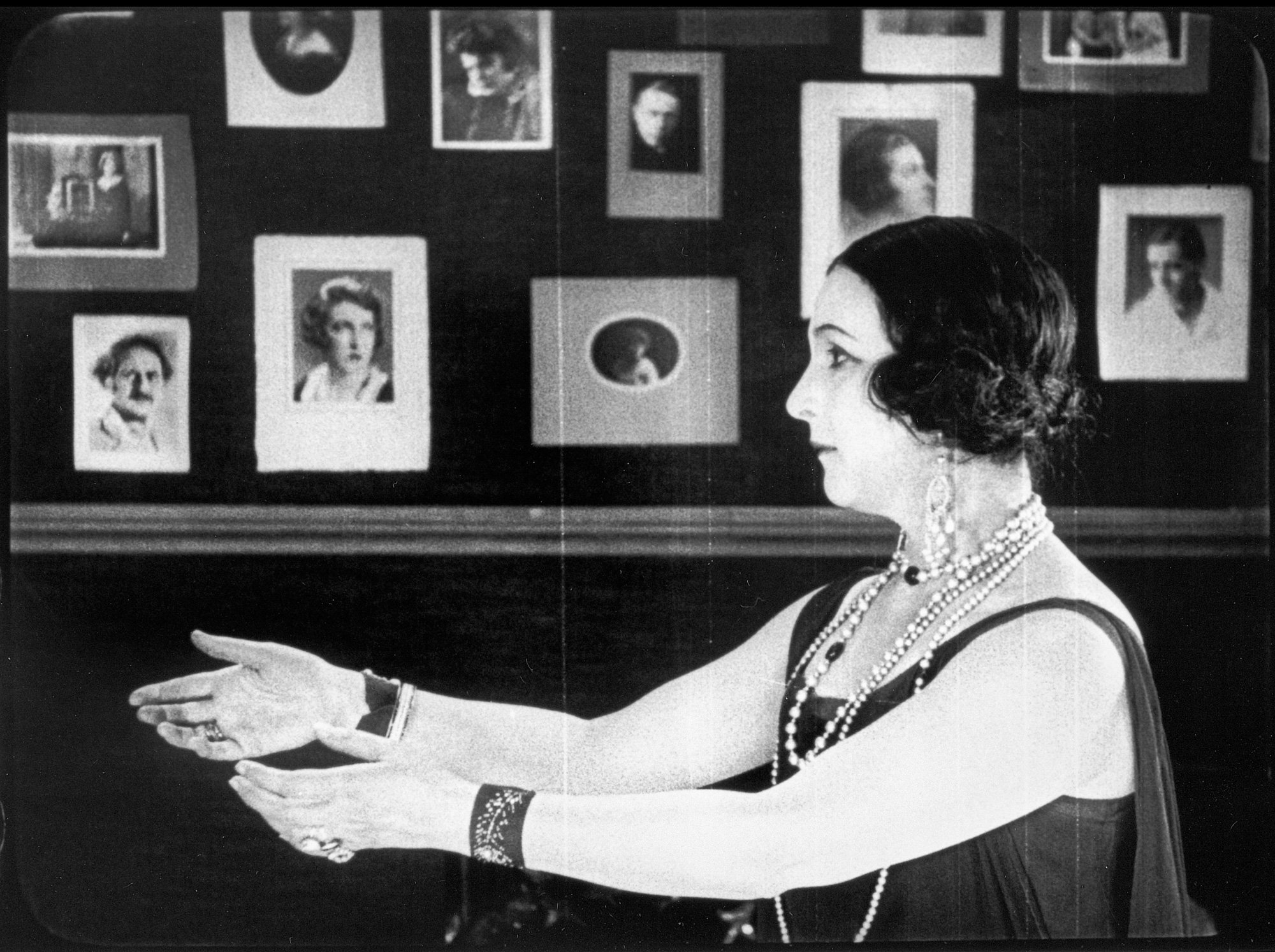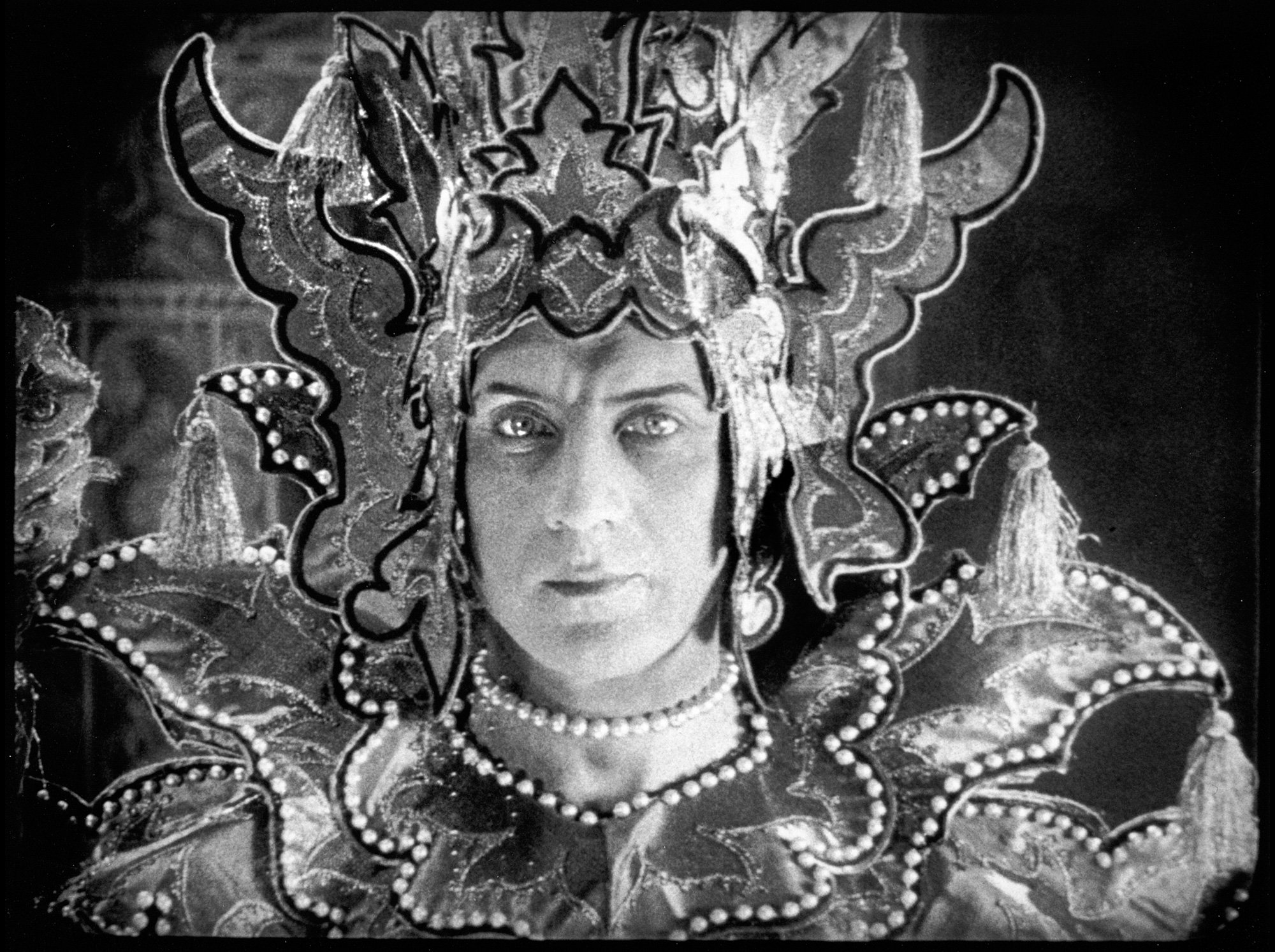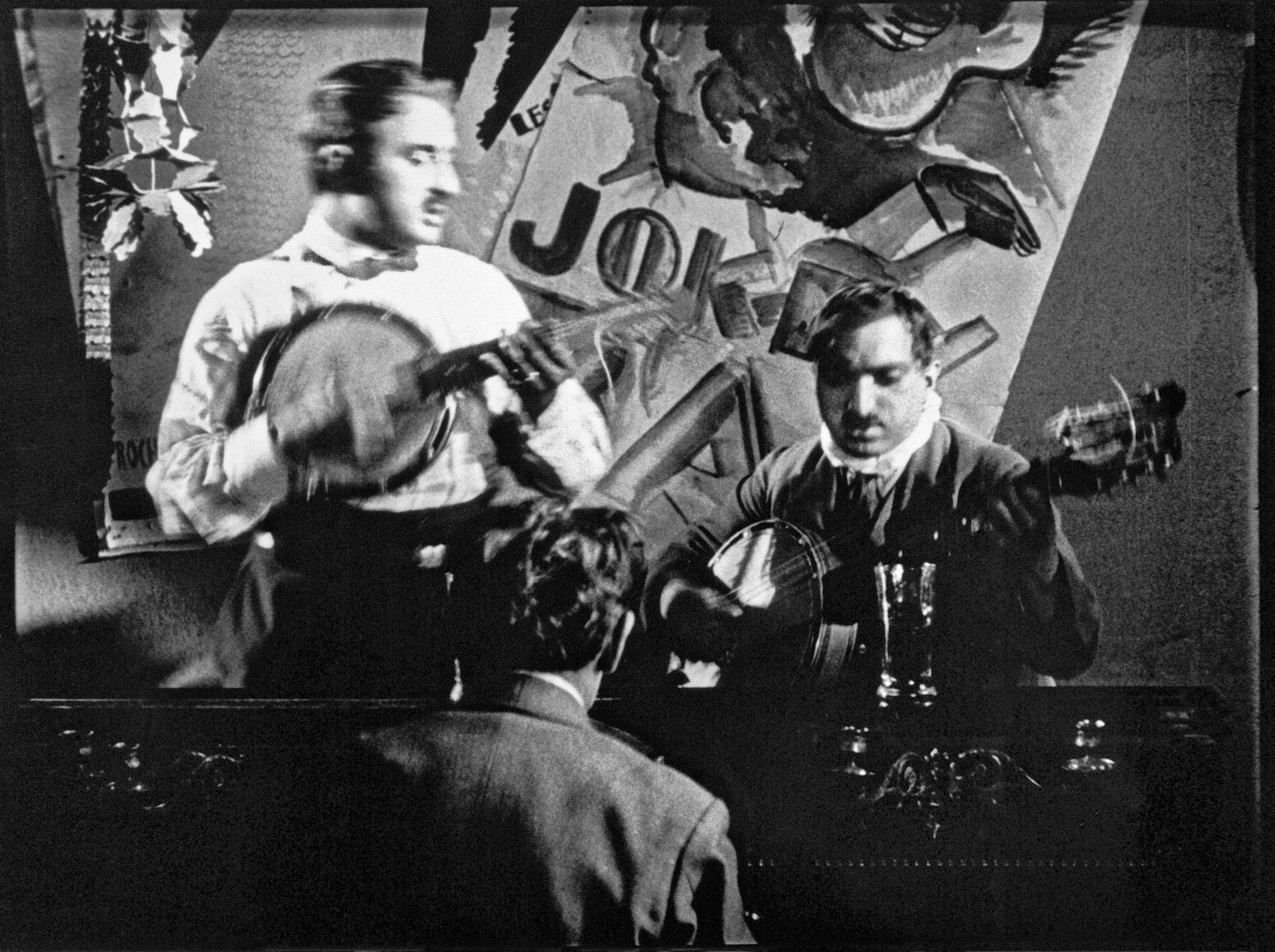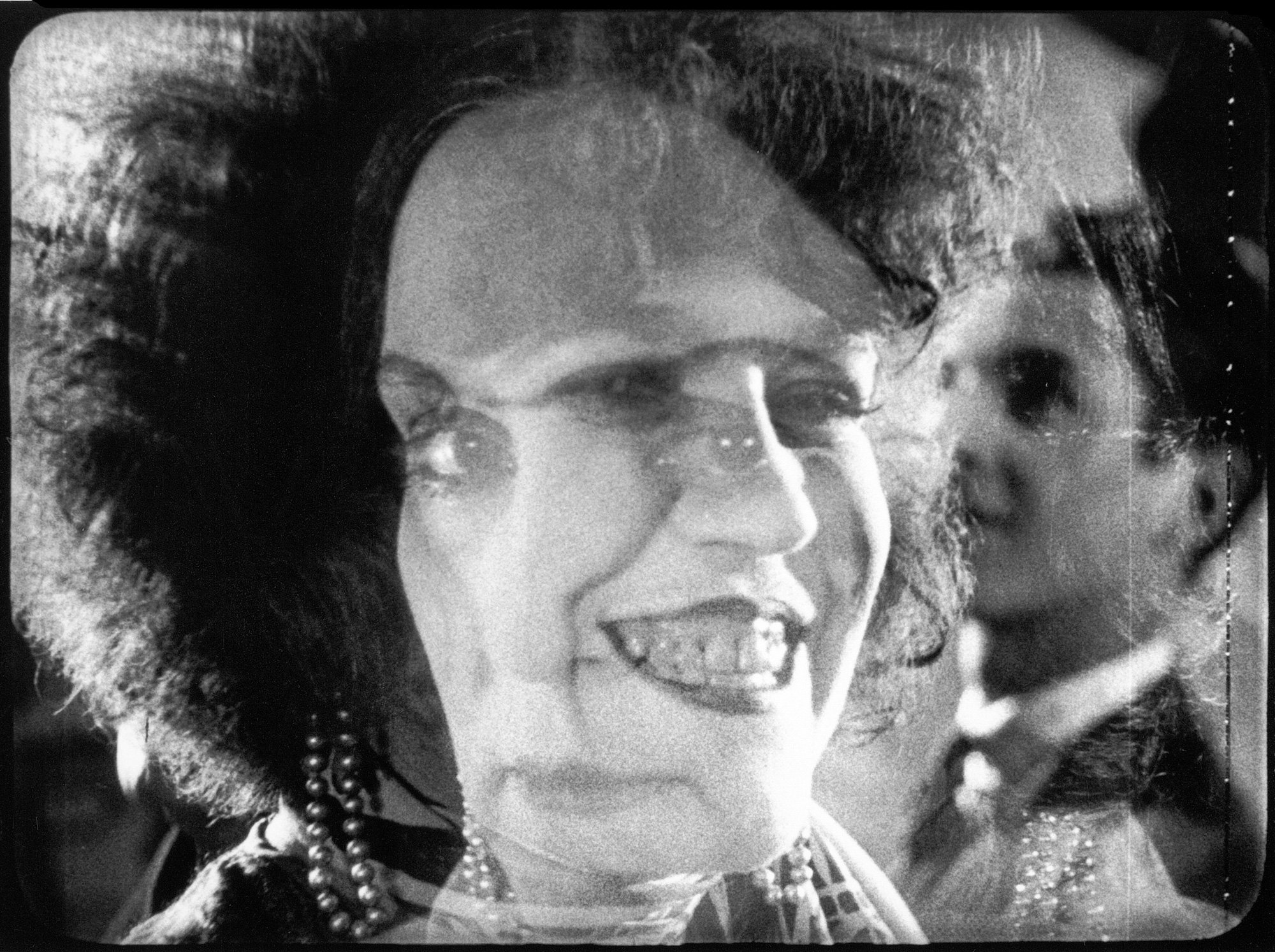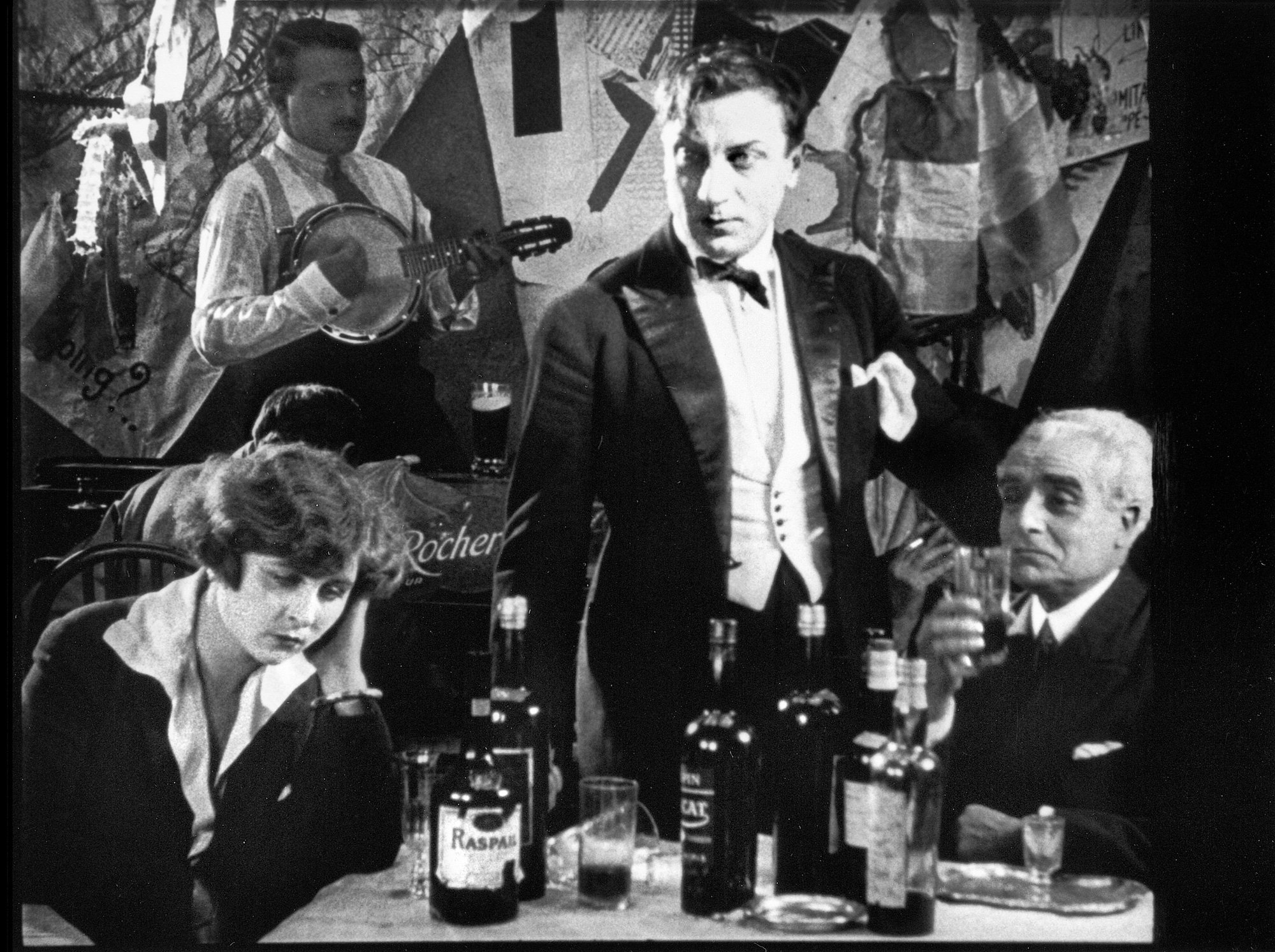
THE LION OF THE MOGULS
The Lion of the Moguls
(Le Lion des Mogols) (Films Albatros, France, 1924)
dir.: Jean Epstein; script: Jean Epstein, Ivan Mosjoukine; photog.: Fédote Bourgasoff, Joseph-Louis Mundwiller
cast: Ivan Mosjoukine (Prince Roundghito-Sing), Nathalie Lissenko (Anna), Camille Bardou (Morel), Alexiane (Zemgali), François Zellas (Kalavas), François Viguier (Grand Khan)
35 mm, 20 fps, 106’; tinted; intertitles: FR, subtitles: PL, EN; restored 2008; source: La Cinémathèque française
The Mogul empire is ruled by the cruel Grand Khan who, fearful of being overthrown by Prince Roundghito-Sing, orders his rival’s beloved, Zemgali, to be locked up in a tower in his palace. When Roundghito-Sing unsuccessfully tries to free her, he is forced to flee the country to escape certain death. On a liner to France, he meets a film crew and falls in love with Anna, an actress, who convinces him to appear with her in a movie. Anna’s lover jealously watches on.
The production company which made The Lion of the Moguls, Films Albatros, was founded by Russian exiles and the man behind many of the company’s projects was its co-owner and star actor, Ivan Mosjoukine. He was the one who usually came up with the stories, and he would cast himself as the lead in the films. That was also the case here – The Lion of the Moguls was largely his work, which explains the vision of orientalism shown with Russian aesthetics, and the various scenes where Mosjoukine himself seems to escape the director’s control. Jean Epstein was taken under the wing of the Films Albatros company and he joined the team of The Lion of the Moguls after he had split from Pathé Consortium Cinéma and spent some time looking for new projects. That explains why he agreed to the terms of the new studio, even agreeing to the loss of directorial independence.
This spectacular-looking film was meant to show off the impressive production values and the involvement of many people in the preparation of the lavish sets and costumes. It still captivates viewers in terms of its visuals, although it was actually shot largely in small studios in Montreuil. This self-referential picture with a cut-up and dream-like narrative – differing aesthetically from Epstein’s later works – is a multi-layered journey: not only the journey of the main character to Paris, but also the journey of the director himself through different film genres and techniques, with frequent changes in mood, camera movements and editing (notably with the dance sequence and the chase through the city streets). (KB)
The photochemical restoration of the film was carried out in 2009 by the ANIM – Cinemateca Portuguesa film laboratory, with the support of the Franco-American Cultural Fund, from the original nitrate negative (Desmet Collection) acquired by La Cinémathèque française in 1958 and also from a 9.5 mm tinted copy found in Chile in 2008.
introduction to the movie: Michał Pieńkowski
section: DIRECTION: FRANCE
music by: Poly Chain
TUESDAY | OCTOBER 26
19:00 | screening room: STOLICA

